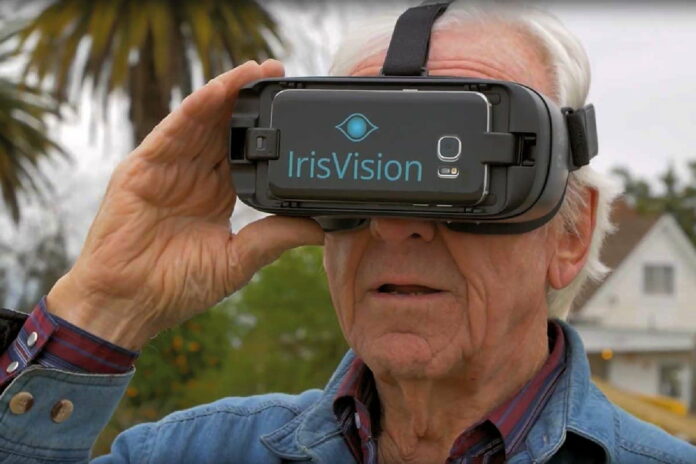We are more than blessed if we can see and feel our surroundings. We are visual animals that detect our environment by viewing them. It is a challenge to be visually impaired and requiring heavy lenses and magnifiers to fulfill our daily routine. More stress is for those whom the vision cannot be surgically corrected by any means.
An AI-enabled technology introduced by IrisVision utilizes a smartphone, virtual reality headset, and algorithm that can help the blind see and read clearly. This intelligent machine was developed with the initiative to aid the blind and help them carry out their chores without the burden of thought for asking for help. Though aesthetically not pleasing, the company has taken a step further in better improvement of eye-related issues. The product not only assures improvement but also is expected to diagnose conditions, test and even treat patients remotely within two years. The addition of AI to help its customers which can test, diagnose, and treat remotely was the future as they would allow ophthalmologists, optometrists, and others to treat people in rural and underserved areas.
The market for this technology could be huge with a statistics estimating 285 million visually impaired individuals around the world, of whom 39 million are blind, 82% being people 50 years old or above. Currently available only in America, the estimation goes- About 6.4 million Americans have low vision that cannot be corrected by glasses or contact lenses, according to a 2016 National Academy of Sciences report. Of those, 4.2 million are older than 40. And as the “silver tsunami” of aging baby boomers sweeps the nation, age-related eye diseases and conditions, like macular degeneration, glaucoma, and diabetic retinopathy, are expected to surge.
However, during these tough days of the pandemic, it has become particularly difficult for blind people to do their chores and often seek help, which is difficult to get now. People with low vision relies on sound and touch that makes it exceptionally impossible with hand sanitizing and social distance practicing, listening to people through masks. They will feel easily isolated and a sense of burden to be taken care of; staying connected with zoom and other applications can be a task too.
The developer of the device and co-founder of Iris Vision, Frank Werblin, took 40 years of combining technology and tech-savvy Ammad Khan as a partner to create this product. Initially taken as a challenge from a board trustee, J. Lynn Dougan while speaking at a Foundation Fighting Blindness conference, to create a wearable device for his visually-impaired daughter, Frank was fascinated by the relationship between brain neurons, the retina, and vision. He eagerly accepted the challenge with the financial aid of the board trustee Mr. Dougan, National Eye Institute, angel investors and venture capitalists, Frank and Ammad worked towards the development of this device.
How does this device work? IrisVision helps the brain to tap into those areas of the eye that still functions. With the use of a smartphone to capture an image of the surrounding, the VR and algorithm enhance the image, fills the gap, and makes a clear visual representation of what the person is looking at. Recently, the company added voice recognition, video streaming, Alexa, and other interactive features that can keep the user updated with news or entertain themselves with videos and TV shows. With so many features come a few cons. This device is large and clunky, and the user needs to be stationary — not walking around — to use it. In addition, at $2,950, it is expensive. And unless you are a veteran, health insurers do not cover the cost.


I’ll immediately grab your rss feed as I can’t find your email subscription link or newsletter service. Do you’ve any? Kindly let me know in order that I could subscribe. Thanks.